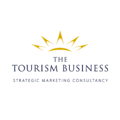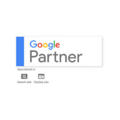It’s astonishing how much the travel and tourism industry has had to deal with since March 2020. It’s also amazing how quick it’s adapted to an ever-changing set of circumstances it had little control over – at times, it’s been like spinning plates on a wobble board, while being pelted with wet sponges. Shaking things up, trying new things, and learning on-the-hoof has become the norm over the last 18 or so months.
And talking of learning, here are five lessons I think every travel and tourism business needs to take forward.
1. Can’t measure? Don’t bother
With everything in flux as it is, every business has to be really careful and focused with its marketing budget. So I don’t think we should to be satisfied with anything other than fully measurable marketing from now on. In other words, any activities you do should have clear KPIs, returns on investment, or outputs attached to them. And if they don’t, simply don’t do it.
For example, placing an ad in the local press because it has an established circulation of X and a readership of Y is no longer a good justification of marketing spend. Why? Because you can’t possibly know how many people have actually seen it, read it, or acted on it (they’re also three very different metrics), so it’s almost impossible to attribute ticket sales or business from this activity.
And it’s the same story for posters and billboards. Yes, it might raise awareness, but it’s impossible to measure how many people go on to book after seeing them. Of course, you can use coupons or codes in your press or out-of-home advertising, but it’s convoluted and adds a lot of unnecessary complexity to the marketing process.
2. User-experience first, last, and always
As we’ve seen during the pandemic, we’ve become a lot closer to our devices. All the Zoom/Teams/Google calls for work and social, the online shopping, the mobile browsing for news, the apps to buy drinks and order food in pubs and restaurants or check in with Track and Trace. It’s not only fundamentally changed the way we interact with brands, but also our expectations in that we all want and demand a more immediate and seamless experience. And the bottom line is that digital enables it.
See a digital ad or get an online newsletter for something of interest, and all you need to do is click through. From a user-experience point of view, it’s much stronger and immediate than seeing a press ad or billboard you can’t interact with, and which will typically fade in the memory with each new marketing message you receive.
Amazon has both ripped up and re-written the rule book on user-experience. It’s shown the world the way forward in what’s possible when you focus relentlessly on the user experience and build everything you do around improving it. The lesson being, the easier and more straightforward you make your end-to-end marketing process – from awareness to interest to desire to action – the more likely people will buy from you.
3. Don’t invest in yesterday’s news
I’m still seeing stickers and posters for Christmas events from 2020, or signs talking about Covid-19 restrictions from last year. It’s another reason to really think about whether it’s worth advertising in traditional, non-digital channels, because the world is moving so fast at the moment, people might assume your posters and signs are out of date.
It’s a similar story with printed media. The publishing industry, like ours, has been ravaged by the pandemic. Two lockdowns have obliterated the printing, distribution, and stocking of many publications, which, again like travel and tourism, have been forced to go online to survive. It’s true the inevitable shift from print to digital was already happening pre-pandemic, but it’s dramatically accelerated since Covid-19 exploded.
So is it worth investing in advertising in printed publications with a declining readership, or investing in digital campaigns that are supremely measurable and which can precisely attribute where sales or bookings are coming from?
And looking to the future, how do we know the half-page ad we bought and paid for in that quarterly mag in February, and which goes to print in March, will still be relevant in April, May or June? The truth is we don’t, so why risk the investment?
4. Be prepared to change tack
We were due to run a campaign for our client, the South West Lakes Trust, this summer. It was all tee’d up and ready to go, but by the middle of July it was obvious it wasn’t necessary because they were fully booked. So we advised them to cancel it and use the budget elsewhere. Again, if it had been an offline campaign, the money would have been wasted as they would have invested in all the usual offline marketing materials like flyers, posters, brochures and door-drops.
5. Don’t sweat the small stuff
Of course, one objection to switching fully to digital marketing is that it doesn’t reach those groups or demographics that aren’t online. It’s a valid point, but you have to ask who in this day and age is not doing most of their research, planning, or buying online – whether on a PC, tablet or smartphone? I would say it’s a tiny fraction of the population, so why waste 25% - 50% of your marketing budget trying to reach them on channels fewer and fewer people are using.
Last word…
Stick to marketing you can measure, focus on the user-experience, don’t become yesterday’s news, be prepared to change tack, and don’t go chasing small fry. Do these five things and you’ll be in a much stronger position to market your travel and tourism business in the increasingly older ‘new normal’.
As we reach the end of our Pandemic Marketing Series, be sure to check out parts 1-4 here:
Part 1
Part 2
Part 3
Part 4
And, for a more in-depth read, download An Industry Renewed: how travel and tourism businesses can thrive in 2021 and beyond.











